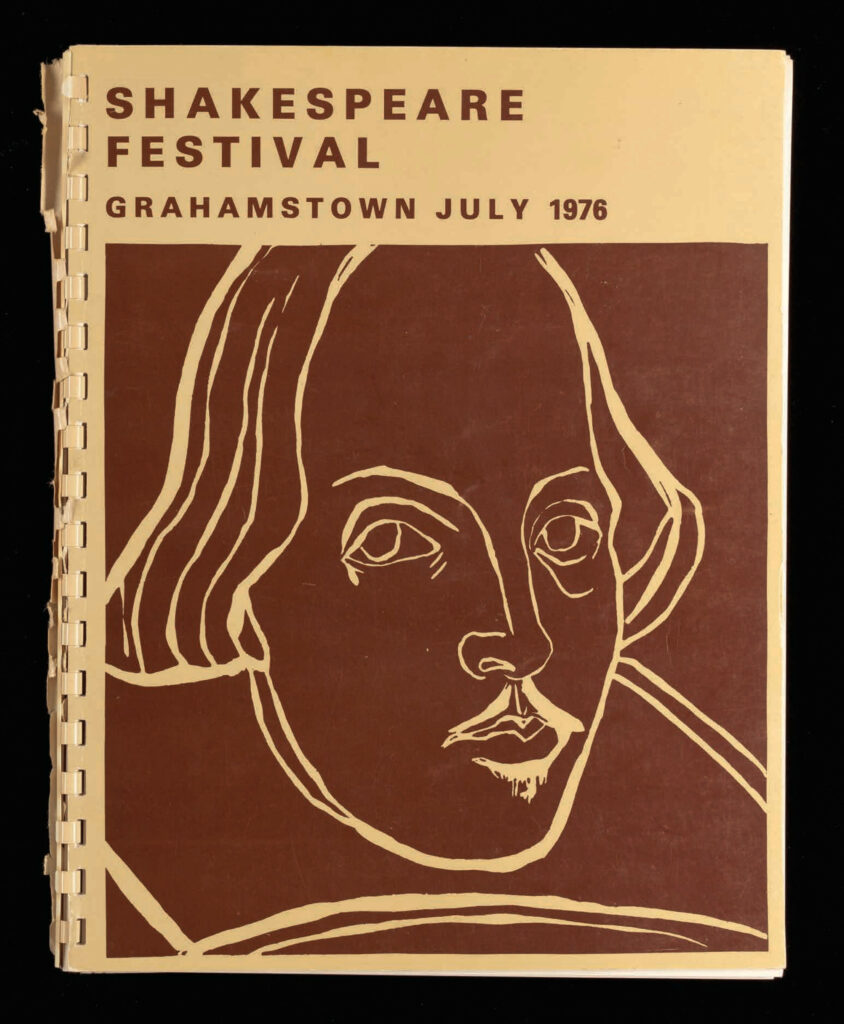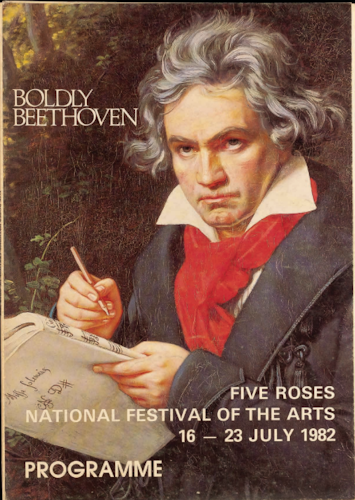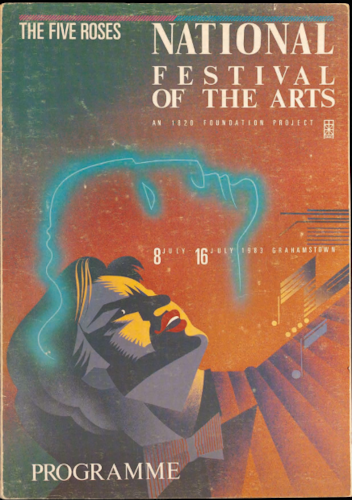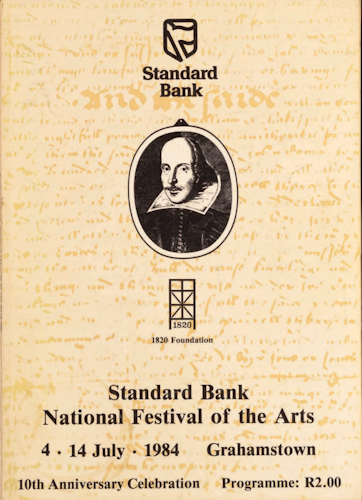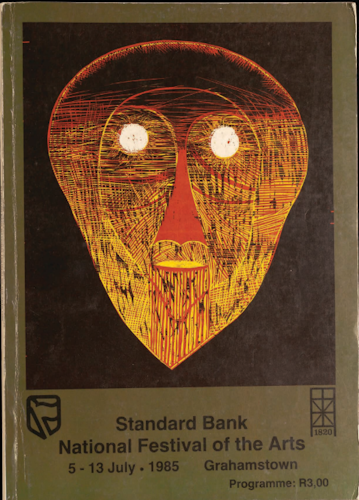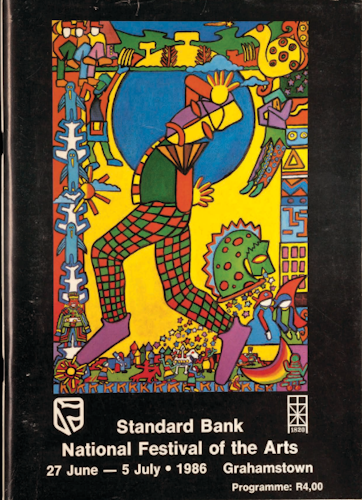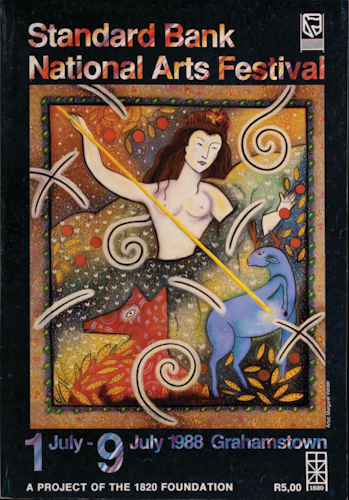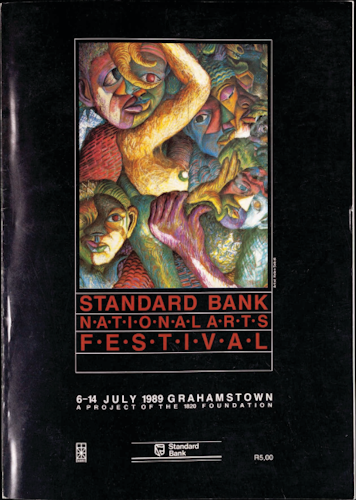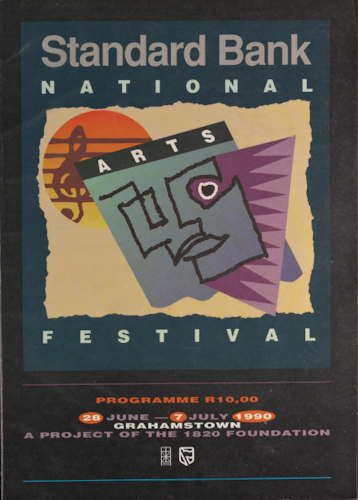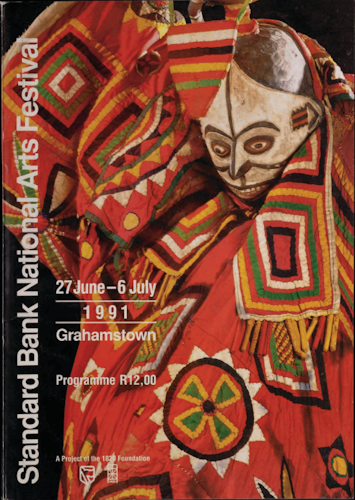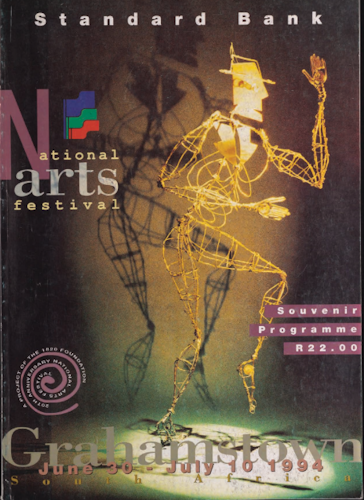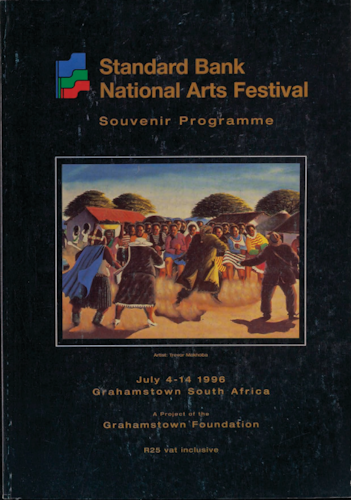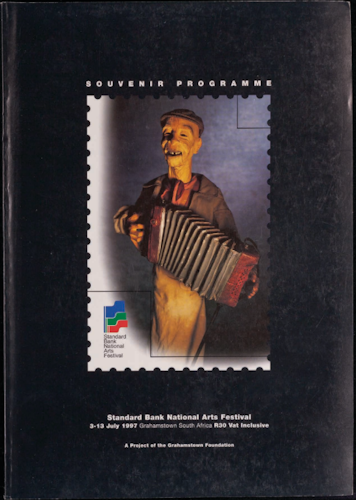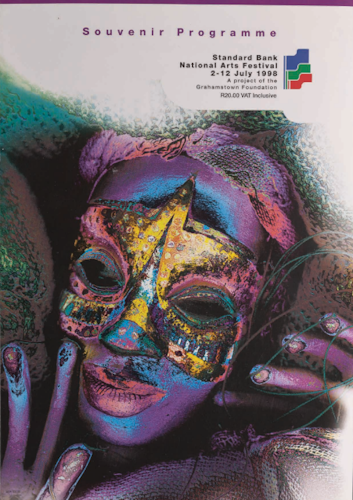51 Years of The Festival
The inaugural Festival celebrated the official opening and dedication of the 1820 Settlers Monument Building. Operating as a living monument to the cultural heritage of all South Africans, the building contains numerous venues, from a spectacular 1000 seater auditorium to small meeting rooms, including a fully functional kitchen, banqueting area, bar and coffee shop. The Monument is the centre of operations for the National Arts Festival, the Grahamstown Foundation, SciFest Africa, the National Schools Festival, the English Olympiad, and many more! During the National Arts Festival, it is one of the main hubs of activity. In 1974, the Festival ran…Read More
Students protested the forced use of Afrikaans as a medium of instruction. The police violently suppressed the protest, leading to hundreds of deaths and galvanizing the international anti-apartheid movement.
1976’s festival was officially called the Shakespeare Festival. As the name suggests, the programme was focused on fostering an appreciation and enjoyment of Shakespearean drama, and included performances and films of an incredible variety of his works, from Richard III, Macbeth and Othello to A Midsummer Night’s Dream, Romeo & Juliet and Love’s Labours Lost. But it wasn’t just the classics on offer. Dawn Lindberg returned to our stages with The Shrew – a reimagining of The Taming of the Shrew, written by Charles Marowitz. Two plays authored by Pieter Dirk-Uys – already a formidable talent, though not yet a…Read More
After three years of successful festivals, there was some debate as to whether another would be possible in 1977. Economic recession and petrol rationing, to say nothing of a tumultuous political situation, had led to financially challenging times across the country. The programme’s opening note, by Professor Guy Butler, explains the motivation to forge ahead: “The current recession and the advent of petrol rationing caused the Festivals Committee and the Council of the Foundation to question whether the Festival should not be abandoned until the economy recovers, but they concluded that it would be short sighted to lose the momentum…Read More
Anti-apartheid activist and leader of the Black Consciousness Movement, Steve Biko, died in police detention. His death led to increased international pressure and sanctions against the apartheid regime.
With a naming sponsorship from Sharp Electronics, the 1978 Sharp Festival of the Arts was able to recapture some of its earlier ambition. The Fine Arts took a front seat, as one of the Monument Building’s primary functions – as an exhibition space – was able to be fully realised for the first time. Curated by Linda Goodman of the Goodman Gallery, the Monument’s galleries were officially launched with an exhibition that featured the likes of Leonard Matsoso, Cecil Skotnes, Andrew Verster and Raymond van Niekerk. The Rehearsal Room – still a popular venue today –housed lectures delivered by Cecil…Read More
This time called the Five Roses Festival of the Arts after a new sponsorship, the 1979 Festival was produced in collaboration with the then-named Department of National Education. The effect of this collaboration is self-evident in the programme for this year which, in addition to what had become the regular offering of gala concerts, orchestras, and films, emphasized another strong Student Festival and a prominent series of Winter Schools. Then, as now, student theatre was often daring, experimental, and prone to pushing the boundaries of traditional modes of theatre practice. The printed programme for this year contained a fascinating disclaimer:…Read More
1980 was perhaps the first time that the then-named Five Roses Festival of the Arts had a programme that so closely resembled the structure of the National Arts Festival today. The curated programme was filled with Classical Music, Jazz, Opera, Fine Arts Theatre, and Film, and with artists who have continued to make regular appearances on our stages to the present day. Waiting for Godot, to name but one example, played at the Rhodes University Theatre, with a phenomenal cast that included the likes of John Kani, Winston Ntshona and Pieter-Dirk Uys. Jazzart, South Africa’s oldest dance company, made their…Read More
The Festival headed into the 80’s with an increasingly strengthened sense of identity and purpose. For the first time called the ‘National’ Festival of the Arts, the importance and scale of the work done annually in Makhanda was beginning to solidify in the artistic community. Mr DM Hopkins, then Chairman of the Festivals Committee, expressed some of this vision in his foreword to this year’s programme: “To enrich the educational and cultural development of the peoples of South Africa” is the objective adopted this year by the 1820 Foundation as its aim for the eighties. Proud objectives need to be…Read More
From the time of its inception, the curated programme has always been organised around a central theme, idea or artistic thread. With the guidance and vision of the Artistic Director, these central ideas guide the selection and curation of work, culminating in a programme that feels fresh and distinct each year, and reflects the artistic achievements of the past, contemporary creative innovations of the present, and visions for the future. In 1982, the central idea of the Curated programme was The Beginnings and Growth of 19th Century Romanticism. In particular, the music of Beethoven was a focal point, with renditions…Read More
1983 was a milestone for the National Arts Festival and its ability to showcase and promote indigenous artists. Whilst the Festival has always welcomed art and artists from all backgrounds, ethnicities and cultures, 1983 marked the first year that the Festival was able to place these voices firmly in the centre of the programme. Dudley Hopkins, the Chairman of the Festival Committee, addressed the question of racial representation – then a radically contentious issue in South Africa – directly: “…the spotlight this year focuses in the main on South Africans – both living and dead. It has long been our…Read More
Affectionately called the Festival of Celebration within the arts community, the 1984 Festival marked the 10th anniversary of the National Arts Festival. It was also the beginning of a long and mutually beneficial partnership with Standard Bank, who took over as the primary sponsors. Now known as The Standard Bank National Festival of the Arts, the scale of the Festival programme increased dramatically, both to celebrate the achievement of a decade’s worth of dedication to the Arts, and as a result of how popular the festival had become with artists and audience members alike. In tribute to its origins and…Read More
The Festival’s commitment to honouring South African artists and to providing a platform for South African voices continued into this, its second decade. The programme for the 1985 Standard Bank National Festival of the Arts, with a cover designed by Cecil Skotnes, is packed with names and titles familiar to seasoned audiences and newcomers alike. John Kani, fresh from a critically acclaimed season in London, returned to our stages with Danny Keogh and Dorothy Ann Gould in Harold Pinter’s One for the Road, while James Borthwick joined the cast of Paul Slabolepszy’s Under the Oaks and Over the Hill. Sidwill…Read More
1986 was a year marked by social and political turmoil in South Africa. Amidst the collapse of the Rand, protest action against racial segregation laws, and increasing levels of violence between the state and civilians, the Festival programme was arranged around the theme ‘Encounters’. Although the Festival has always striven to remain apolitical itself, we have always stood for justice, equality, human rights, and open access, and the ‘Encounters’ programme attempted to create a space that welcomed and celebrated all voices. The introductory notes from several key players in the organisation demonstrate the challenges faced, and opportunities seized, by the…Read More
As civil unrest continued into 1987, the Festival continued to use its platform to promote diversity and inclusion for all South Africans. The value of the work done in the artistic sector at this time was profound, and was encapsulated beautifully by Jan Breitenbach’s introduction to the 1987 Festival: “In these times of social, political and economic uncertainty in South Africa the 1820 Foundation feels privileged to present the exciting Standard Bank National Arts Festival. The programme which has been compiled is well-balanced and stimulating – and perhaps more importantly, it transcends all the barriers which divide our people, because…Read More
With South Africa still being governed under a State of Emergency, the continued celebration of the National Arts Festival was a complex matter. Without wishing any festivities to appear insensitive to, or detached from, the immense hardships being experienced around the country, the Festival was mindful of the opportunities that it was able to provide – not just artistically and financially, but by providing a platform for diversity and free expression. In introducing the 1988 programme, the Chairman of the Festival Committee wrote: “Grahamstown, because of its topography and the plight of the less privileged in the depressed Eastern Province,…Read More
A symbolic and actual end to the “Iron Curtain” and a major step toward the reunification of Germany and the end of the Cold War.
If art is a mirror for society, then the 1989 National Arts Festival reflected a collective certainty that change in the country’s political regime was imminent. Although the Festival is apolitical, this year’s programme contains hints of the democratic future that lay just around the corner. For the first time, contributors to the programme referenced the post-Apartheid era as a certainty, and the Festival celebrated its ability to provide a platform for free speech, open discourse, and continued meditations on the past and future. Standard Bank continued as a main sponsor and Dr Conrad Strauss, in his Festival Message, wrote:…Read More
The ANC, PAC, SACP, and other political organizations, and Nelson Mandela was released from prison on February 11, marking the start of formal negotiations to end apartheid.
At the start of the new decade, the National Arts Festival naturally reflected on its growth over the preceding fifteen years. In his Festival Message, Professor Alan Crump – Chairman of the Festival Committee – reminded festival goers that the Fringe had begun with just five events in 1978! There were 21 events in the 1982 Fringe programme, and by 1989 had over 330 events. That year saw the sale of 60 000 Fringe tickets, an increase of 44%, while the Main Festival’s ticket sales grew by 32%. Such promising growth and scale placed the Festival unequivocally amongst international events of…Read More
As the socio-political transformation of South Africa continued to unfold, the National Arts Festival found itself more able than ever to engage with cultural groups, political organizations and artistic movements to which our access had long been restricted. The Festival felt this not only as an encouraging opportunity for new growth, but also as a moral imperative. In his opening address, Professor Alan Crump explained that: “that the Festival is moving closer to reflecting the richness and diversity of South Africa’s cultural heritage. To criticise and adopt diverse view-points Is also an expected part of a national festival’s creative mosaic……Read More
Novelist Nadine Gordimer won the Nobel, using her platform to speak out against apartheid and highlighting the role of literature in the liberation struggle.
Festival goers arrived in 1992 to find that the Festival had a whole new look! For the first time, the National Arts Festival had its own branding. The logos of Standard Bank and the 1820 Foundation had been replaced by the Festival’s new emblem – three flags in red, green and blue. As Professor Alan Crump, Chairman of the Standard Bank National Arts Committee, explained “It was felt that the largest cultural event in the country deserved an autonomous image and a new identity.” This new look extended from the programme to the town itself, as new and improved signage…Read More
The assassination of popular ANC and SACP leader Chris Hani nearly derailed the peace process, but Nelson Mandela’s subsequent plea for calm helped secure the transition.
Two exciting new programmes were added to the Festival repertoire this year. The Smirnoff Jazz Festival – a festival within the Festival – had been a popular feature of the Fringe from 1989 to 1991 and had, by all accounts, been sorely missed in 1992. In 1993, it was not only welcomed back with great enthusiasm, but became a featured part of the curated programme. Here, it joined another art form being raised to greater prominence: Craftart. ‘Craftart’ is a term that was coined quite specifically for the South African context. In a fantastic essay in the souvenir programme, Dr…Read More
1994 was a year of incredible celebration, not just for the Festival, but for the country as a whole. Earlier that year, South Africa had held the first general election in which all races and ethnicities were able to participate equally. Though the Apartheid regime had been coming to an end for several years, these elections signified both a definitive ending, and a hopeful new beginning. This sense of celebration, reflection, and reconciliation naturally carried over into both the National Arts Festival’s official programme and the Fringe. As the Festival Committee’s Chairman expressed: “Over the past few months this country…Read More
As is often the case, there were a number of programme elements in 1995 that beautifully showcased the arts’ unique ability to encapsulate moments of history and culture. One such installation was the work of that year’s Standard Bank Young Artist for Visual Art – Jane Alexander. Working primarily in plaster, Alexander was interested in socio-political integration and issues of inheritance. Her work probed the question of how “self-awareness impacts on integration and the establishment of a new society,” while encouraging the viewer to observe without judgement. Another special piece of work was the play Marabi at Graeme College. Written…Read More
In August of 1994, the 1820 Settler’s Monument had been devastated by a fire which left much of the building seriously damaged. Extensive renovations were undertaken, including a redesign of the Guy Butler Theatre, and in May of 1996 the building was re-dedicated by then-President Nelson Mandela. Parts of the old fire damaged walls were left in place, and can still be spotted by sharp-eyed Festival goers today! But the President’s visit was more than a moment of great pride for the Festival team. It represented the growing sense that the National Arts Festival had reached a point of national…Read More
In a particularly candid and comprehensive programme note, Professor Alan Crump addressed some of the concerns that had been raised by members of the public and media over the past few years. Reading it today, it is striking to see how many of the challenges faced by the Festival in 1997 still strike a chord today. He describes a delicate balancing act that the Festival has had to consider every year since its inception: “During a time when so many involved in cultural pursuits in this country are battling to survive, the Standard Bank National Arts Festival Committee is proud…Read More
Despite being well into its third decade, the 1998 Festival boasted a number of exciting firsts! On the Curated Drama programme there were no fewer than eight plays written by South Africans. Of the total of 11 productions, seven were premieres. Brazilian actress and playwright Denise Stoklos made her first appearance in our country, as did Pulitzer Prize winning dramatist August Wilson. The State Theatre Ballet, now in its 35th year, came to Makhanda for the very first time, and Brett Bailey brought Ipi Zombi. Elsewhere in the programme were more familiar faces:, Reza de Wet and Marthinus Basson staged…Read More

